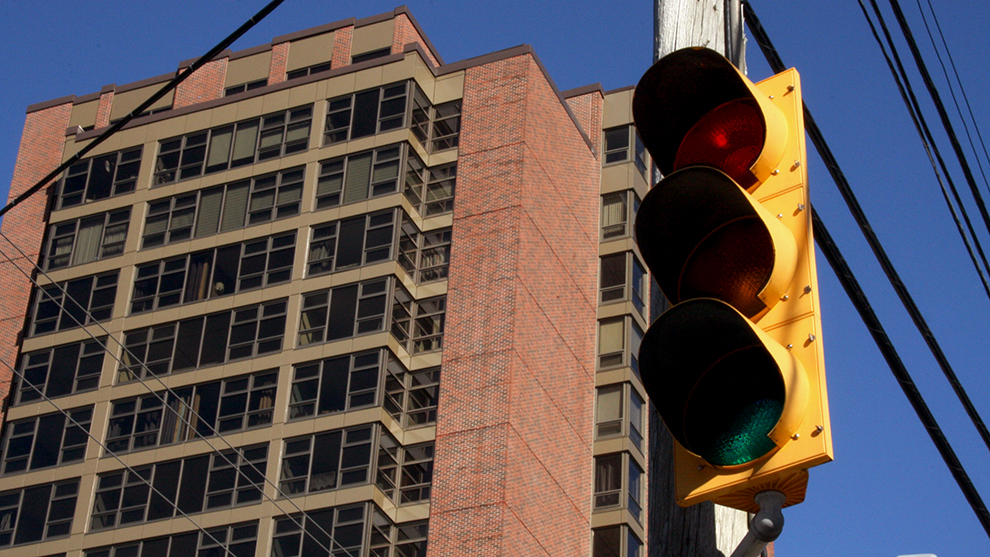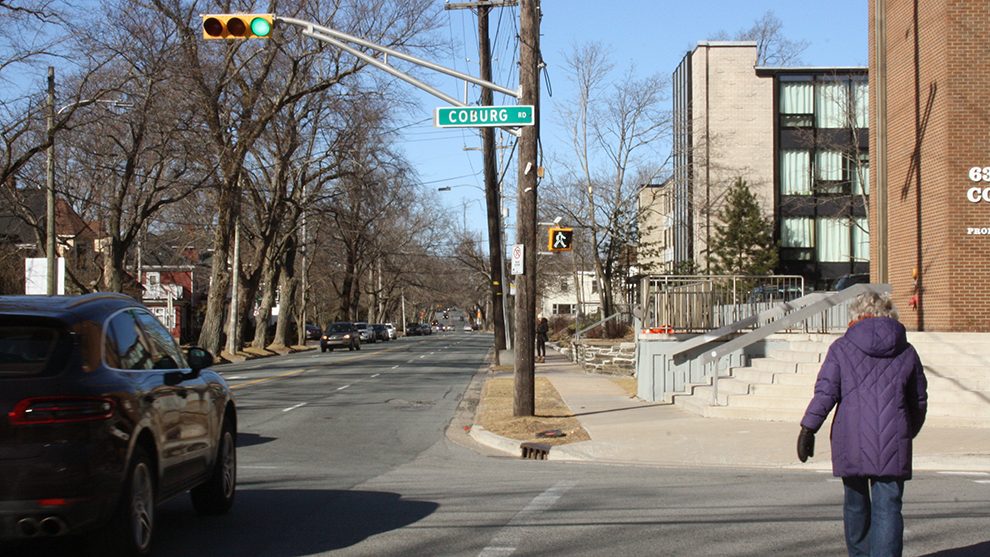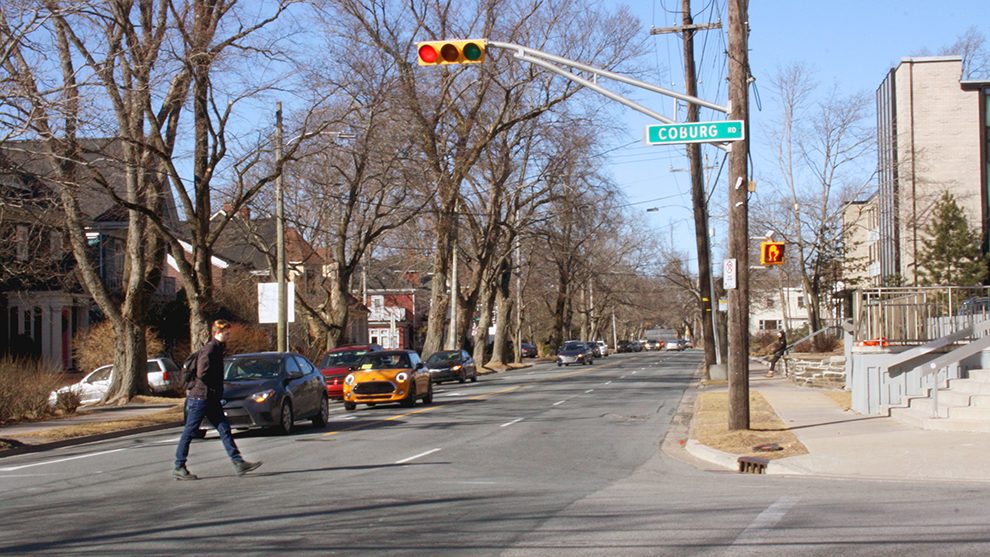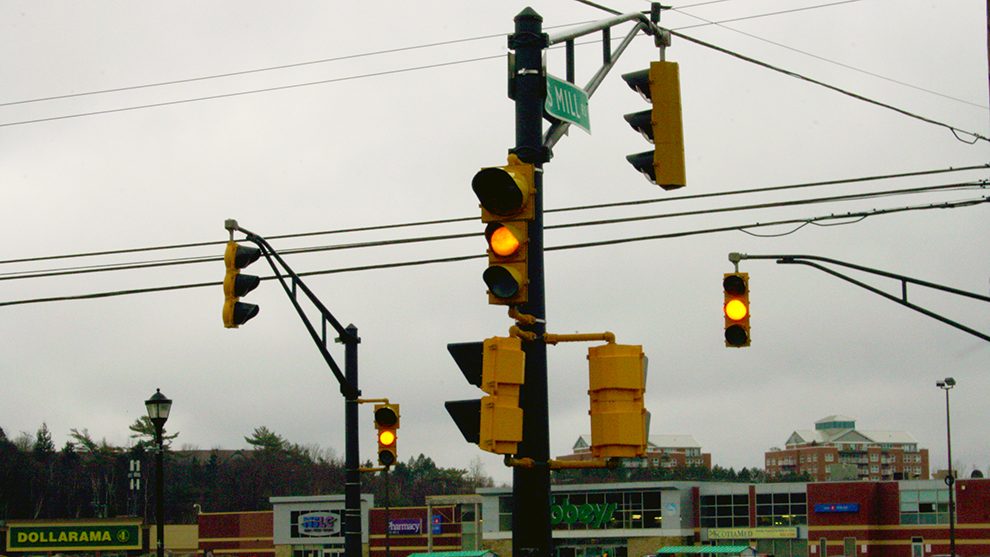Traffic Signals
How HRM decides where to put a traffic light
MSVU students want a traffic light; The Signal finds out if that’s possible


caption
Traffic light assessments look at the number of cars and pedestrians that use the intersection.Mount Saint Vincent University students are petitioning for a traffic light on the Bedford Highway, but community support may not be enough.
MSVU student Madeline Mitchell started the petition for a light at the Bedford Highway and College Road intersection after she was almost struck by a car. Currently, there’s a crosswalk with overhead amber lights, but Mitchell says something else is needed.
“It’s just way too busy to not have a traffic light,” says Mitchell.
The petition had 809 signatures from students, professors and parents as of Thursday.
If a request for traffic lights at this location came in, the HRM would “certainly” look at it, says Taso Koutroulakis, the deputy traffic authority for the municipality.
But, how exactly does the Halifax Regional Municipality decide if a traffic light goes up? The Signal asked Koutroulakis.
Assessments for traffic lights
The rules for the location of traffic lights are very site specific.
“There are guidelines, but they are guidelines that we look at,” says Koutroulakis. “We use that as a benchmark because it all depends on the location.”
He says to assess a situation, they look at specific factors like:
- The number of cars and pedestrians that use the intersection
- Collisions that have happened at the intersection, and if the intersection itself contributed to the incident
- How many lanes the intersection has, along with entry and exit points
- If the intersection is in an urban or rural area
- The other intersections nearby
For transportation practices, HRM follows methods outlined by the Transportation Association of Canada.
“The methodology that we use for the Transportation Association of Canada is a matrix,” says Koutroulakis. “So you input the different factors in the matrix (an Excel spreadsheet), and then you get an overall score. We use that score as a guide to determine whether a traffic signal is warranted at a particular location.”
The TAC has a guide open to the public on signalized intersections from 2008.

caption
Koutroulakis says one of the most common light requests is a protected left turning signal in existing intersections.Traffic light distances
The traffic light location Mitchell proposes for MSVU is approximately 430 metres away from the nearest intersection. Koutroulakis says the minimum distance guidelines between two traffic lights can vary.
“It’s not a hard and fast rule,” he says. “The literature out there says it should be a spacing of like 400 metres, but in reality, in an urban setting, that’s not really realistic.”
He says the closer two traffic lights are, the harder it is on traffic flow. He says Young Street, Robie Street and Kempt Road all have traffic lights close to each other and it takes some creative programming to make traffic move smoothly.
Old versus new roadways
The traffic light proposal at MSVU is for an existing road system and can also pose some extra challenges.
Koutroulakis says it’s easier to decide where to place traffic lights if it’s in a developing area. If builders and designers are working from scratch, they can build everything at once. Traffic lights alone cost $300,000.
“There is an increased cost too because you have to dig up the existing roadway, avoid existing infrastructure, or move existing infrastructure, say for example if there is a power pole in the way,” he says.
Even owners of private property will face difficulty requesting a traffic light on an existing roadway.
“Just because someone comes with money in hand and says, ‘Hey, we want this and we’ll pay for it,’ doesn’t guarantee that it will happen because it still has to be warranted,” says Koutroulakis.
For those looking to request a change to an existing light, or to request a new one, call 311 for Municipal Services and Information.


